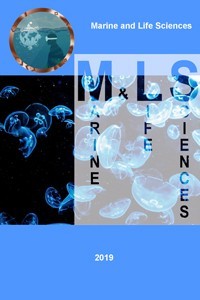
Marine and Life Sciences
Yazarlar: ["Muhammet Ekin AZBAZDAR", "Görkem AKINCI", "Erkan GÜLER", "Zeynep Ahsen KOÇER"]
Konular:-
DOI:10.51756/marlife.1091169
Anahtar Kelimeler:Influenza A virus,Sediment,Environmental sources,Environmental factors,H6N2 virus
Özet: Influenza A viruses (IAVs) are naturally carried by wild aquatic birds and generally cause asymptomatic gastroenteric disease in their natural reservoir hosts. Because the viruses follow oral-fecal route in the avian host, they could be shed into water bodies through feces. Furthermore, IAVs that are secreted to abiotic sources might be preserved in the environment for a period, facilitating the transmission of viruses between individuals or species. Viral stability could be affected by several factors such as pH, salinity, and temperature of water. Therefore, this study aims to investigate the lowest amount of infectious IAVs that could be detected in sediment samples via molecular and virus isolation methods, and to compare the sediment composition with the efficiency of detection/isolation of IAVs and viral persistence. For this purpose, an H6N2 virus (A/Aquatic bird/Gediz Delta/1/2018) of avian origin was used for artificially seeding the sediment samples that were collected from Gediz Delta, Izmir, Turkey. Molecular methods showed that lower amount of H6N2 virus could be detected in sediment sample collected from freshwater area (FS) in comparison with the sediment samples that were collected from salty water area (SS). Furthermore, virus precipitation method using polyethylene glycol increased the efficiency of virus isolation by 10-fold in FS, but not in SS. On the other hand, although the detection limit for IAVs was higher in SS than in FS, viral fitness was better maintained in SS. Moreover, high number of cations in the composition of SS along with larger surface area facilitated virus adsorption on SS complicating the virus to detach from sediment particles. Thus, the result of this study remarks that the environmental origin of abiotic sources could affect the viral stability and fitness; therefore, it could affect the transmission dynamics of the virus in different environments.